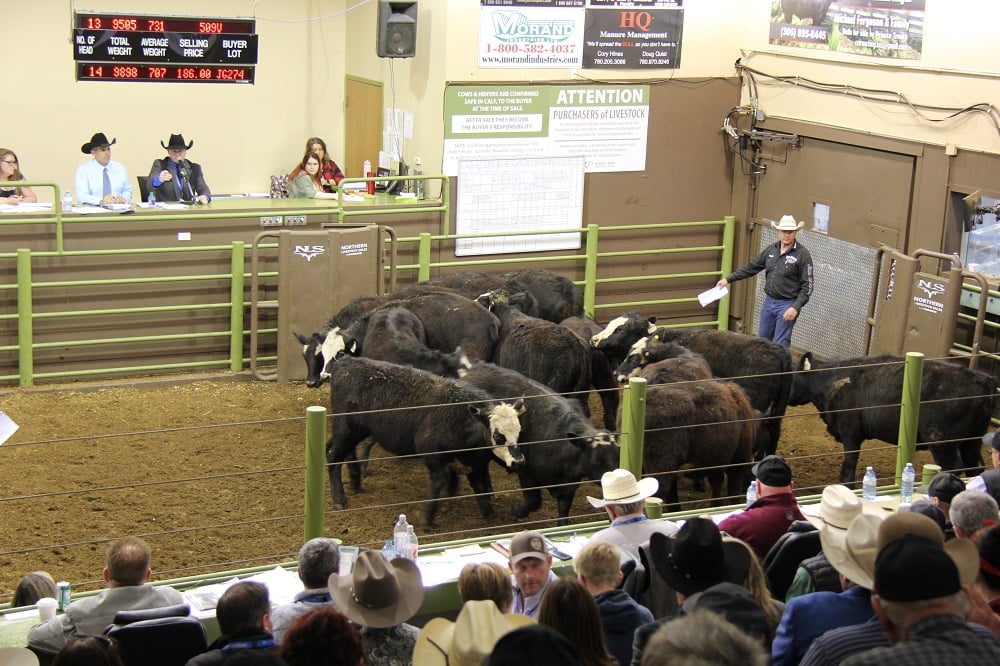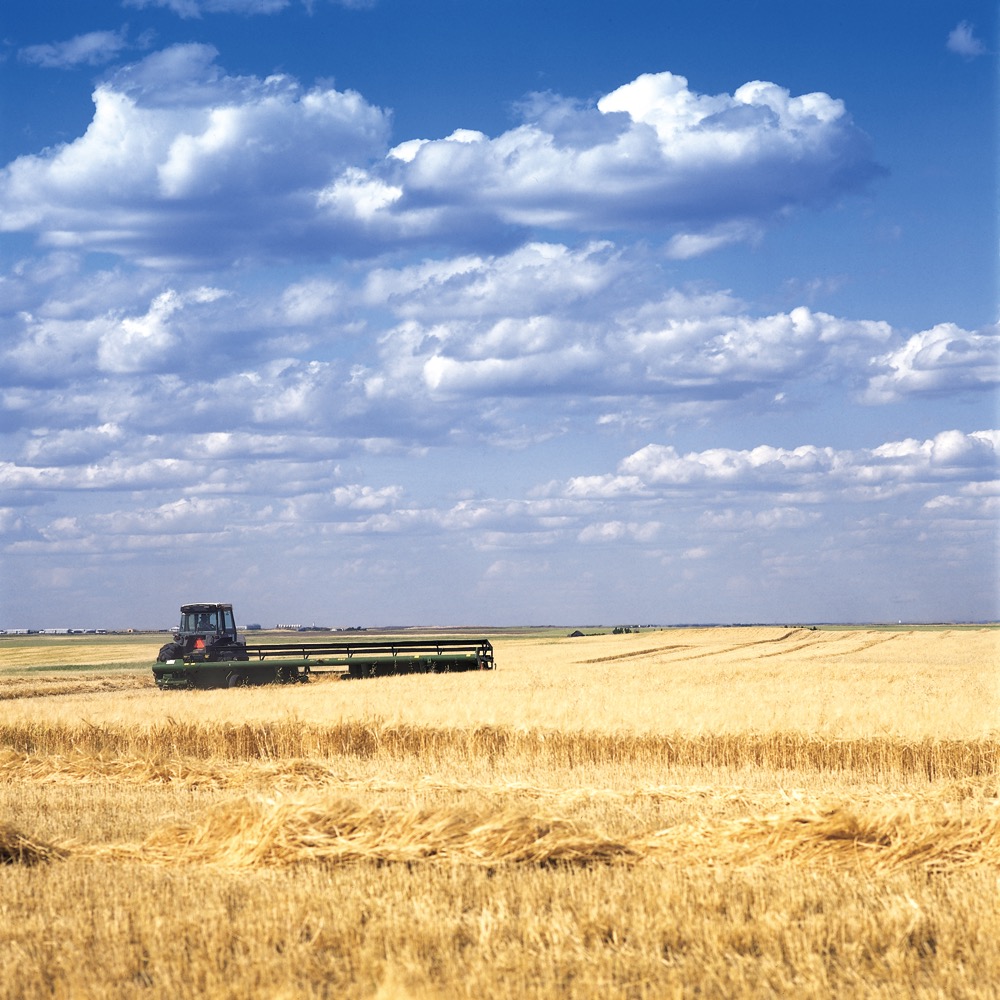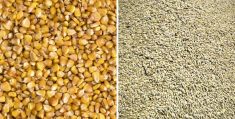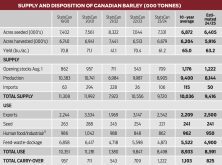Earlier in the summer, we were expecting a year-over-year increase in Canadian barley production. Acreage projections were above year-ago levels and up until June 30, most of Western Canada had received above-normal precipitation. Both acreage and yield projections have reversed course. Canadian barley seeded area for the 2024 campaign was down nearly one million acres from last year. Most of Alberta received less than 40 per cent of normal precipitation during the summer. Barley prices in Western Canada appear to have bottomed over the past month and are now starting to percolate higher. The function of the Canadian barley market is to ration demand. Domestic prices need to trade high enough to halt exports. Lethbridge barley prices need to trade at a premium to imported U.S. corn values to encourage imports.
According to Statistics Canada, farmers seeded 6.4 million acres of barley this past spring, down from the 2023 area of 7.3 million acres. The drier conditions in Alberta and western Saskatchewan during the summer resulted in severe yield drag. Statistics Canada model-based survey conducted in late July had the average Canadian yield at 59.9 bu./ac., down from the 2023 yield of 61.2 bu./ac. and down from the 10-year average number of 65 bu./ac. Production is now estimated at 7.5 million tonnes, down from the 2023 crop size of 8.9 mil- lion tonnes, and down from the 10-year average of 8.7 million tonnes. Alberta barley production comprises about four million tonnes out of the total Canadian crop. Trade estimates suggest that 1.5-two million tonnes have light test weight. There are probably about 0.6 million tonnes of light barley in Saskatchewan out of a total provincial crop of 2.7 million tonnes. The crop is smaller and of poor quality.

Talk in the trade is that there has been some feed barley sales to China. The high-quality barley is in eastern and northern Saskatchewan. Export demand will drain the high-quality barley to offshore channels. We’re expecting Canadian barley exports to reach 2.2 million tonnes, down from the 2023-24 program of 2.5 million tonnes. Australia, Russia, Ukraine and France will have lower exports in the 2024-25 crop year so there will be Chinese demand for Canadian barley.
Domestic food and industrial usage is about the same every year. This leaves about 4.7 million tonnes of barley for domestic feed usage. We’re projecting a Canadian barley carryout of 756,000 tonnes, down from the 2023-24 ending stocks of 1.2 million tonnes, and down from the 10-year average of 1.1 million tonnes. Western Canada will need to import about four-4.5 million tonnes of U.S. corn to satisfy domestic feed demand. U.S. corn will likely trade into feedlots in central Alberta by the middle of winter. Barley supplies will be relatively tight across Alberta, forcing feedlots to source from farther distances in Saskatchewan. Later in the fall, barley prices in central and southern Alberta will be premium to imported U.S. corn values. This will make the barley market highly correlated with the corn futures market.
The corn market tends to make seasonal lows in late August and early September, just before the main U.S. harvest. U.S. corn prices are expected to trend higher from September through March 2025. Brazil is experiencing drier conditions heading into the seeding period. Argentine corn acres will be down about 20 per cent due to disease issues and Argentina is also experiencing below-normal precipitation. Eastern Europe and Ukraine have production problems due to drought-like conditions. The U.S. is the main exporter until April 2025. Brazil’s main exportable surplus comes from the second crop which is only harvested in June while the main Argentine harvest occurs in April and May.
Read Also

Cattle Market Summary
Break-evens, cow and calf prices, plus market summaries courtesy of Canfax and Beef Farmers of Ontario. Cost of Production October…
Feedlot operators will experience a higher cost-per-pound gain later in winter and during the spring of 2025. This will weigh on the feeder market. Feeding margin projections over the winter are negative based on the current feeder cattle prices and deferred live cattle futures. Higher feed grain prices will have more of an influence on the feeder market compared to past years for this reason. Finishing feedlots should have their discount schedule in place for deliveries of lightweight barley. If you don’t have a discount schedule, you will be rejecting loads consistently because there is a significant volume of lightweight barley.

















